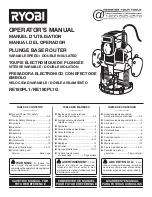
xStack
®
DES-3528/DES-3552 Series Layer 2 Managed Stackable Fast Ethernet Switch Hardware Installation Guide
35
Appendix C
Glossary
1000BASE-SX:
A short laser wavelength on multimode fiber optic cable for a maximum length of 2000 meters
1000BASE-LX:
A long wavelength for a "long haul" fiber optic cable for a maximum length of 10 kilometers
1000BASE-T:
1000Mbps Ethernet implementation over Category 5E cable.
100BASE-FX
: 100Mbps Ethernet implementation over fiber.
100BASE-TX:
100Mbps Ethernet implementation over Category 5 and Type 1 Twisted Pair cabling.
10BASE-T:
The IEEE 802.3 specification for Ethernet over Unshielded Twisted Pair (UTP) cabling.
aging:
The a utomatic removal of dyna mic entries from the Switch Database which have timed-out and are no longe r
valid.
ATM:
Asynchronous Transfer Mode. A con nection oriented tran smission protocol based on fi xed length cells (p ackets).
ATM is designed to carry a complete range of user traffic, including voice, data and video signals.
auto-negotiation:
A featu re on a port, which allo ws it to adverti se it s capabilities for spee d, duplex and flow contro l.
When conn ected to a n e nd statio n th at also supports auto-negotiation, the l ink can self-detect its opt imum op erating
setup.
backbone port:
A port which does not learn device addresses, and which receives all frames with an unknown address.
Backbone ports are n ormally used to con nect the Switch to the backbon e of your netwo rk. Note that backb one ports
were formerly known as designated downlink ports.
backbone:
The part of a network used as the primary path for transporting traffic between network segments.
bandwidth
: Information capacity, measured in bits per second that a channel can transmit. The bandwidth of Ethernet is
10Mbps, the bandwidth of Fast Ethernet is 100Mbps.
baud rate
: The switching speed of a line. Also known as line speed between network segments.
BOOTP:
The BOOTP prot ocol allo ws you to automa tically m ap a n IP addre ss to a given MAC add ress ea ch time a
device is started. In addition, the protocol can assign the subnet mask and default gateway to a device.
bridge
: A device that interconnects local or remote networks no matter what higher-level protocols are involved. Bridges
form a single logical network, centralizing network administration.
broadcast:
A message sent to all destination devices on the network.
broadcast storm
: Multiple simultane ous broadcasts that typically absorb available network band width and can cause
network failure.
console port:
The port on the Switch accepting a terminal or m odem connector. It changes the parallel arrangement of
data within computers to the serial form used on data transmission links. This port is most often used for dedicated local
management.
CSMA/CD
: Channel access method used by Ethernet and IEEE 802.3 standards in which devices transmit only after
finding the data channel clear for some period of time. When two devices transmit simultaneously, a collision occurs and
the colliding devices delay their retransmissions for a random amount of time.
data center switching
: The point of a ggregation within a corporate network where a switch provides high-performance
access to server farms, a high-speed backbone connection and a control point for network management and security.
Ethernet:
A LAN sp ecification developed jointly by Xerox, Intel and Digital Eq uipment Corporation. Ethernet netwo rks
operate at 10Mbps using CSMA/CD to run over cabling.
Fast Ethernet:
100Mbps technology based on the Ethernet/CMSA/CD network access method.
Flow Control:
(IEEE 802 .3z) A means of holding packet s back at the transmit port of the connected end station.
Prevents packet loss at a congested switch port.
forwarding:
The process of sending a packet toward its destination by an internetworking device.
full duplex:
A system th at allows p ackets to b e transmitted and received at th e same time and, in effect, doubles the
potential throughput of a link.
Summary of Contents for DES-3528 - xStack Switch - Stackable
Page 66: ......
















































